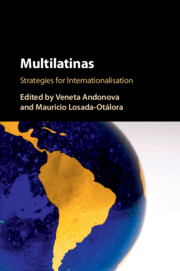Book contents
- Multilatinas
- Multilatinas
- Copyright page
- Contents
- Contributors
- Acknowledgements
- Introduction
- Part I
- 1 Multilatinas – where do we find them?
- 2 Colombia – the new wave
- 3 Peru – the future
- 4 Chile – the disciplined
- 5 Argentina – the precursor
- 6 Mexico – the lighthouse
- 7 Brazil – the heavyweight
- Part II
- Part III
- Part IV
- Index
1 - Multilatinas – where do we find them?
from Part I
Published online by Cambridge University Press: 10 November 2017
- Multilatinas
- Multilatinas
- Copyright page
- Contents
- Contributors
- Acknowledgements
- Introduction
- Part I
- 1 Multilatinas – where do we find them?
- 2 Colombia – the new wave
- 3 Peru – the future
- 4 Chile – the disciplined
- 5 Argentina – the precursor
- 6 Mexico – the lighthouse
- 7 Brazil – the heavyweight
- Part II
- Part III
- Part IV
- Index
- Type
- Chapter
- Information
- MultilatinasStrategies for Internationalisation, pp. 11 - 34Publisher: Cambridge University PressPrint publication year: 2017



